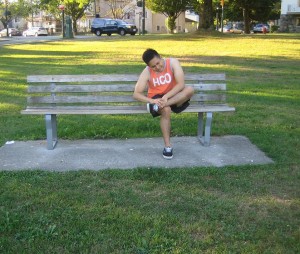The sinus tarsi is described as a small-sized bony canal that runs through the ankle beneath the talus bone. Any form of damage to the sinus tarsi occurs due to overuse or a sprain involving the ankle.
What are the symptoms?
The signs and symptoms of sinus tarsi syndrome usually include pain that can hard to determine but usually in front part of the bony area or lateral malleolus on the exterior of the affected ankle. In most cases, the tenderness is usually experienced on the opening of the sinus tarsi which is situated on the exterior of the ankle.
The individual will experience pain or difficulty in running on a curve on the side of the sore ankle. If the ankle is inverted or moved into a position where it is turned inwards, it might cause pain with sinus tarsi syndrome.

In most cases, an anesthetic injection is administered into the sore sinus tarsi to help confirm a diagnosis by reducing the pain and allowing normal functioning. An MRI scan can indicate if there is excessive fluid in the sinus tarsi canal.
Treatment
The treatment for sinus tarsi syndrome involves rest from all activities that will trigger pain. If the individual continues to engage in activity or sports with a painful ankle, it will aggravate the injury or prevent the healing process. It is important to apply an ice pack to minimize the pain and inflammation. The ice pack can be applied for 10-15 minutes every hour initially if the injury is sore and eventually reducing to 3-4 times in a day as needed. If you want to learn more on how to effectively provide cold therapy, enroll in a first aid class. (Read here for more information about the classes offered).
The doctor will prescribe NSAIDs (non-steroidal anti-inflammatory drugs) such as ibuprofen. Just remember though that it should not be taken by those who have asthma. Electrotherapy particularly ultrasound can also help reduce the swelling and inflammation due to sinus tarsi syndrome.
Mobilization of the subtalar joint is a vital phase of the treatment and rehabilitation process. The doctor will help with the ankle mobilizations for sinus tarsi syndrome. Correcting any biomechanical issues such as over pronation are taken into consideration. It is important to note that over pronation is described as the flattening of the foot or rolls in excessively. This can change the way the ankle bones moves, thus limiting the space in the sinus tarsi channel. Orthotic insoles are prescribed that are placed in the shoes to correct any biomechanical foot issues. Always bear in mind that using the correct running shoes for the foot type of the individual is important.
Strengthening exercises for the ankle particularly proprioceptive exercises such as the use of a wobble board must be started. If the individual has been out of training due to an injured ankle, proprioception of the ankle will be disrupted. The balance exercises and utilizing a wobble board can help strengthen the proprioception and reduce the risk for re-injury. In addition, the calf muscles at the back part of the leg should be stretched. Remember that tight calf muscles can affect the biomechanics of the ankle.
